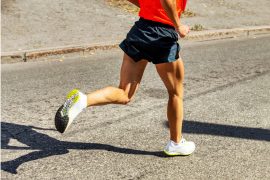Good health is fundamentally linked to regular physical activity. However, a new thesis from the University of Gothenburg highlights that not all forms of activity contribute equally to our well-being. According to the research, a higher degree of intensity in physical activity than previously assumed is required to achieve significant health benefits.
Research that Changes Perceptions
Jonatan Fridolfsson, who recently completed his PhD in nutrition and sports science, emphasizes the importance of sufficiently intense physical activity to achieve health benefits.
His research, based on data from four comprehensive health studies, has used advanced analyses to show a clearer link between physical intensity and health outcomes than previous studies have been able to demonstrate.
The Limit of Health Benefits
Fridolfsson points out that current recommendations, which often set the limit for moderate intensity at 3 MET (Metabolic Equivalent of Task), are insufficient for most individuals.
His findings suggest a higher threshold – closer to 4.5 METs for 150 to 300 minutes per week – to optimize the health benefits of physical activity.
An interesting finding of the thesis is that an individual’s level of fitness plays a major role in the level of intensity necessary to achieve health benefits. This perspective opens up for a more tailored approach to physical activity, where the individual’s physical conditions are taken into account.
Fridolfsson advocates adapting the general recommendations to include a stronger focus on moderate to high-intensity activity. It is not about striving for maximum effort at all costs, but rather finding a level of activity that is challenging enough to improve fitness and health.
Application in Health Care
This new insight has the potential to revolutionize the way healthcare providers approach prevention and treatment by offering more personalized advice on physical activity. It underscores the importance of adapting recommendations to the unique needs and circumstances of the individual to promote a healthy lifestyle over time.
Fridolfsson’s work highlights the crucial importance of not just being active, but ensuring that the activity is sufficiently intense. This contributes to a deeper understanding of how physical activity can be used more effectively to improve public health.
Facts:
To measure physical activity objectively, so-called accelerometers, a form of motion sensor, such as an activity bracelet, are used. The improved data processing is based on a form of frequency filtering that captures high-intensity activity better than the most common method of data processing.
The analysis methods used are multivariate statistics. The methods identify detailed intensity patterns of physical activity that are associated with different health outcomes. These patterns make it possible to study which intensity of physical activity is most strongly associated with health for different people.





